It’s hard to keep your Chinese face in America. At the beginning, before I even arrived, I had to hide my true self.” [294]
Through the stories of four immigrant women in the first half of 20th century, Amy Tan weaves a myopic tapestry that details their struggle to preserve the Chinese heritage while gingerly assimilating to the American society. The Joy Luck Club revolves around these four friends, or at times secret rivals who boast about their daughters’ talents, at the mah jong (a Chinese tile game that mandates four players) table who share stories of their lives in China and the journey to America. Woven in their narratives are their daughters’ recollection of the problems growing up in two cultures.
Why do you have to use me to show off? If you want to show off, when why don’t you learn to play chess? [101]
But somehow, when you lose something you love, faith takes over. You have to pay attention to what you lost. You have to undo the expectation. [140]
These interlocking stories evoke tension that is rooted in the misunderstanding between the two generations separated by geographical barriers. Mothers work hard to instill in their daughters the remnants of the native culture and heritage, while the first generation Chinese-American girls are “too busy chewing gum, blowing bubbles bigger than the cheeks.” While mothers worry their daughters’ not being the own person, having the best of the two worlds—American circumstances and Chinese character, the daughters are embarrassed at their mothers’ old ways.
I smile. I use my American face. That’s the face Americans think is Chinese, the one they cannot understand. But inside I am becoming ashamed. I am ashamed she is ashamed. Because she is my daughter and I am proud of her, and I am her mother but she is not proud of me. [291]
The versatility with which the older Chinese women, who have respectively escaped pre-arranged marriage, survived war, and left behind babies in China, switch their Chinese face to American face is remarkable. This flexibility, although at times inevitable, is interpreted as means to protect their children. Like the ambivalent nature of the club’s name (joy luck in Chinese means happiness by chance), whose meaning is lost when translated from Chinese to English, one realizes that the mothers’ experience and values are also not to be fully translated to their daughters. Throughout the novel Amy Tan reminds us that an understanding of Chinese culture is a prerequisite to understanding of its meaning. The novel as a result captures the struggle of Chinese-American immigrant experience through an examination of the historical legacy and the problem of the immigrant identity. It poignantly captures that bittersweet contradicting desire to foregoing non-American attributes and embracing ethnic root and identity.
332 pp. [Read/Skim/Toss]
Filed under: American Literature, Books, Chinese Literature, Contemporary Literature, Literature | Tagged: American Literature, Amy Tan, Books, Chinese American Literature, Contemporary Literature, Literature, The Joy Luck Club |















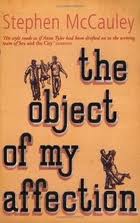





















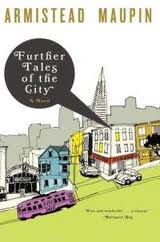









































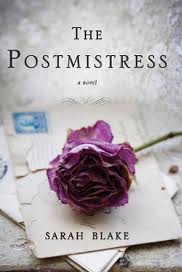












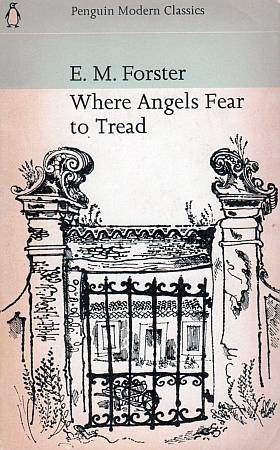















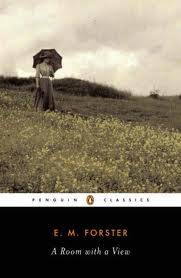








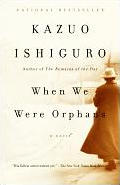

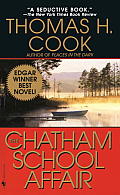




















































































































































Amy Tan is one of my favourite authors. Have you read any of her other books? I love them all (apart from Saving Fish from Drowning) I think you’d find her autobiography especially interesting though – she has some funny opinions about people who have written the study guides for her books!
I loved this book, it made me cry and cry and cry. It also reminded me so much of my grandmother. I feel like, in a sense, this is the female version of Hong Kingston’s China Men.
I’ve not read anything from Amy Tan, even though my sister left one of her books with me years ago and I’ve never picked it up. Jackie also just did a post with suggestions for book book club reads that revolved around parenting, and this was on the list. I know I must read this some day.
This is one of my all-time favorite books, and Amy Tan is among my favorite writers. This book always brings a tear to my eye.
Read this book years ago and I can still remember crying and relating to it. Definitely a must read! Great review!!
It’s been ages since I read this, but I’ll never forget the character who has to divide everything equally with her husband and keep all those lists!
I adore this book. “Two Kinds” especially resonated with me when I read it as a kid, but now I have a greater appreciation for Tan’s portrayal of the sort of schizophrenia that first- or second-generation children develop when dealing with two drastically different cultures. I need to reread this book!
I absolutely loved this book, which I read when it first came out. I can’t remember all the details anymore, but I remember enough of the story that it has stuck with me over the years.
Wonderful quotes; great review!
I’ve read many of Amy Tan’s books, but not this one. Will have to take care of that soon! Great review.
You pulled out wonderful quotes. And a very interesting note about the title coming out funny in translation. It was the title that led me to pick up and buy the book. 🙂
Great review, as always, Matt.
Jackie (Farm Lane Books):
I think a lot of the reading guides have over-analyzed her works. I may be wrong since this is my first Amy Tan book. I’m coming back for more! 🙂
claire:
The part about how the mother always saves things away and forgets about them makes me cry. That is so my mother!
Sandy:
Oh this book would make a perfect candidate for parenting, more like the generational and cultural gaps between mothers and daughters.
Anna:
It’s funny but also poignant and touching. I can relate to a lot of the mothers and daughters’ struggle. Tan strikes a perfect balance between the power of story telling and humor.
Nadia:
Even though the novel is made up of interlocking stories, it overall achieves a great coherence. The characters are unforgettable.
Amy Reads Good Books:
The division list is just so American…in the Chinese culture we do things pretty much like a family style dinner–sharing.
Lily:
That story stays with me as well because I grew up trying to have the best of both worlds, trying to maintain a healthy balance of who I am and also trying to fit in a society of which the norms aren’t necessarily mine.
Beth F:
While the individual details might be a bit confusing, but together the stories stitch a striking unity that is so powerful as a reading experience. Tension is everywhere in the narratives as mothers and daughters try to come to terms of each other’s feelings.
rhapsodyinbooks:
This book has a plethora of quotes that are ponderous, wrenching, and funny! 🙂
JoAnn:
What would you suggest I should read next by Amy Tan? 🙂
lena:
I never thought about the meaning of “joy” and “luck” in Chinese until I read how a mother told her daughter that happiness sometimes is beyond your choice. That is why one should always be grateful.
Where to next with Amy Tan? Well, it’s been several years since I’ve read her novels and, at this point, they are starting to blend together (similar themes). I liked The Kitchen God’s Wife most, but it may be because that’s the first one I read. I think Saving Fish From Drowning is the only one that got less than stellar reviews.
Your review was eloquent and this happens to be one of my favorite books of all times. It broke my heart in parts. I felt that way while reading Shanghai Girls too and Hotel on the Corner of Bitter and Sweet.
I liked this book when I first read it, then hated it when I studied it in high school. Now I think I’m appreciating it again in a new way. It was a strange but rewarding experiencing learning so much about Chinese culture through a discourse of femininity.
I love how it doesn’t alienate non-Chinese people living in Western culture, but everyone who reads it can take something away of value. (my family moved to Australia when I was a baby so I understand the culture gap problems, which I think are inherent of many immigrant families)
In my June 8 review of Lisa See’s Shanghai Girls I said I was reminded of Tan’s The Joy Luck Club because of the similar assimilation stories. I think The Joy Luck Club is Tan’s best, but you could try The Hundred Secret Senses.
JoAnn:
Saving Fish From Drowning is what I have written down. The Kitchen God’s Wife is what I’ll need to get. I heard it’s very well-written and “delicious.” 🙂
Staci:
I’m about 30 pages into Shanghai Girls and I can see why the book evokes memories of The Joy Luck Club! They could be read as a literary pair!
Elena:
You have brought up a great point. Consider that the role of women has always been eclipsed by men, and that women have been so repressed, I find the feminine perspective of China in literature and history a very reliable resource for a glimpse of the culture and tradition. After all, women were the ones who ran family and maintain order in the house.
Jeanne:
Thanks Jeanne for another Amy Tan recommendation. I’m reading Shanghai Girls and literally every page of the book evokes scenes and memories of The Joy Luck Club. 🙂
I had trouble getting into this when I read it in January and put it aside. But I am sure it was because I had so much going on in January that my attentions were everywhere else. I have the book sitting on the shelf waiting for a better time for me to read it. I love books about Asian cultures, so I can’t imagine this will be a book I will not get some enjoyment out of.
This book resonated with me, especially when I was in my late teens when I had trouble working out my identity, struggling to be English enough in my English world and Chinese enough in the Chinese and not having yet worked out the right balance of both to fit me. There were parts in the book that I just thought, “I can so relate to that.” or “Yep, that’s happened to me too” but there were insights into the way some Chinese mums think too, which allowed me to make sense of some of the way my mum has behaved/ acted or said.
[…] they have one thing in common: Chinese restaurants. This echoes the restaurant scenes depicted in The Joy Luck Club. Jennifer 8. Lee summarizes in shocking prose on the driving force behind this giant big wheel of […]
I’m a little puzzled – so many comments in one day – so I think it was a class room situation – you are the prof and the comments are by the students.
I’m neither – I’m just a guy who liked the movie of The Joy Luck Club and following that I read the Bonesetter’s Daughter and Saving Fish From Drowning.
I did a review of the film and here”s the link.
Thanks for your hard work on the site.
jmm